Participate, Designing with User-Generated Content by Helen Armstrong and Zvezdana Stojmirovic (on amazon USA and UK.)
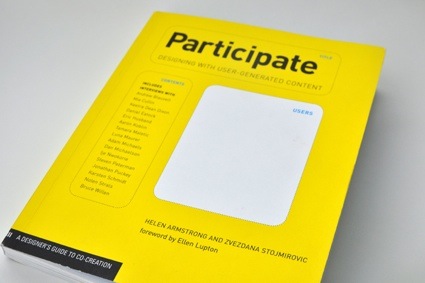
Publisher Princeton Architectural Press says: Creativity is no longer the sole territory of the designer. User-driven design has never been easier for the public to generate and distribute. Users of websites such as Flickr, Threadless, WordPress, YouTube, Etsy, and Lulu approach design with the expectation that they will be able to fill in the content. How will such a fundamental shift toward bottom-up creation affect the design industry? Participate considers historical and contemporary models of creation that provide ideas for harnessing user-generated content through participatory design. The authors discuss how designers can lead the new breed of widely distributed amateur creatives rather than be overrun by them.
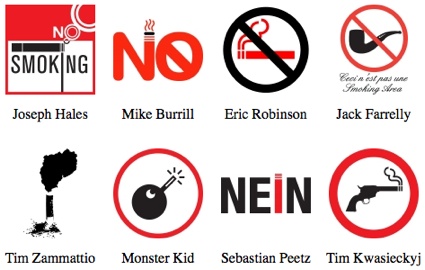 Daniel Eatock, No Smoking Sign Library, ongoing
Daniel Eatock, No Smoking Sign Library, ongoing
Nowadays, many of the tools of production and distribution used by graphic designers are available to the broader public. And not only are members of the public turning into amateur designers, they are also invited by professionals to contribute to their creative process. The book addresses the curiosity of the amateur of course but it also talks to professional designers (or artists) who fear that they might be trampled underfoot by distributed amateur creatives.
Participate is a introductory book for anyone who is interested in the impact that networked co-creativity has on design, graphic design but also on other fields such as typography, silk-screening, craft, fashion, advertising, etc.
Each chapter analyzes one of the key components of participatory design: community (or what drives people to participate in the absence of a financial compensation), modularity (the groups of units that makes up a larger system), flexibility (making branding more elastic) and technology (or why code is ‘the new literacy.’)
Chapters are colour-coded: the white pages are for theory and examples of successful participatory design. The yellow pages contain the interviews with designers, programmers, communication ‘strategists’ and curators. And because the authors of the books are designers but also educators, the blue pages are for exercises that invite readers to experiment with the concepts, projects and the ideas presented in the book.
The theory sections are written with clarity, they do a good job at explaining basics such as how the Open Source ad the Copyleft movements have paved the way for new mindsets, how technology has pushed users to adopt a more active role, what generative design is, etc.
A few projects presented in the book:
 Clemens Weisshaar and Reed Kram, Outrace, 2010
Clemens Weisshaar and Reed Kram, Outrace, 2010
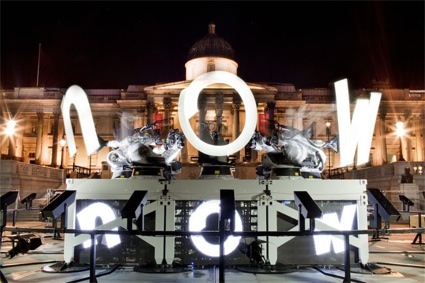 Clemens Weisshaar and Reed Kram, Outrace, 2010
Clemens Weisshaar and Reed Kram, Outrace, 2010
For the London Design Festival, Kram/Weisshaar and Reed Kram installed eight industrial robots on Trafalgar Square and let the public take control of them to write personal light messages which were recorded and shared as video files.
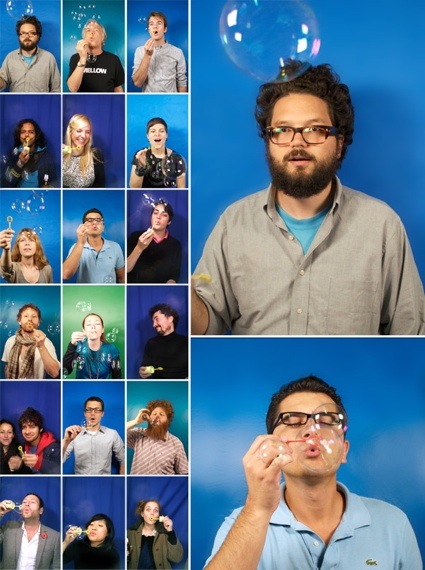 Keetra Dean Dixon, Willing Wonder, 2007
Keetra Dean Dixon, Willing Wonder, 2007
Keetra Dean Dixon created a photo booth-like space in which people activate a hidden camera each time they lift a bubble wand and blow a bubble.
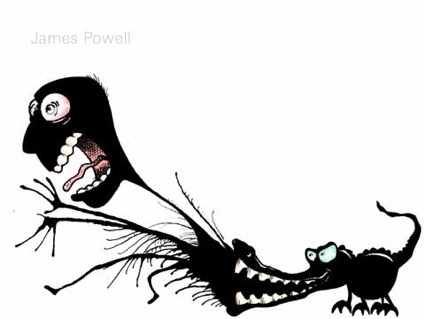 Stefan Bucher, the Daily Monster, 2006
Stefan Bucher, the Daily Monster, 2006
For 100 days, Stefan Bucher filmed himself drawings monsters and posted the short clips on his website. He then asked readers to write the story of the monster. His “open Source Monsters” also allows people to submit their own drawings based on the inkblots he provides. The online project lead to a book which had already gathered a public long before it hit the bookshops.
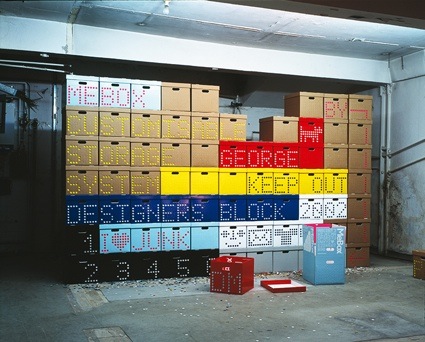 Graphic Thought Facility, MEBOX, 2002
Graphic Thought Facility, MEBOX, 2002
MEBOX is a customizable storage system. Each box has a grid of perforated discs that can be pressed out to create characters. When assembled, the double-thickness construction presents the message against the contrasting colour of the box lining.
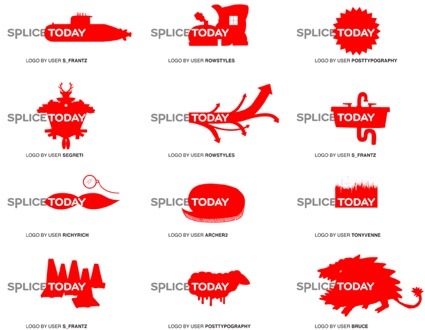 Posttypography, The Splice Today logo, 2008 – 2009
Posttypography, The Splice Today logo, 2008 – 2009
Check out the website of the book, it presents dozens of projects that have not been included in the volume.
Photo on the homepage: Joe Galbreath, Paper Robot Army. Credit image: Kristian Bjornard.
Related: Le Cadavre Exquis.
